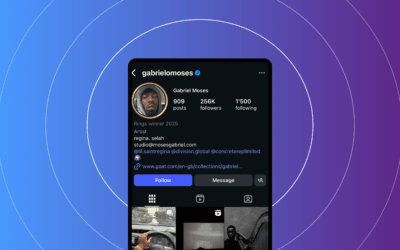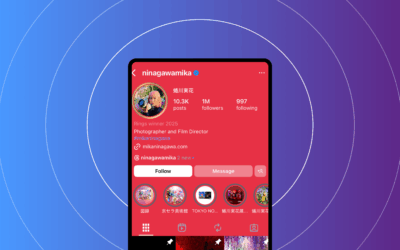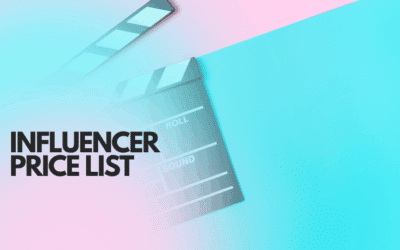How to Create a Brand: A Step-by-Step Guide for Modern Marketers
How to create a brand that’s recognizable, trusted, and scalable? This step-by-step framework walks you from purpose to launch so your marketing, product, and revenue teams move in sync. If you’ve ever wondered how to create a brand without endless workshops or vague decks, you’re in the right place.
By the end, you’ll have:
– A one-page brand brief template
– A unique value proposition (UVP) framework you can test
– A content pillar map that clarifies brand content vs branded content
– A 6–8 week launch checklist with owners and success criteria
Why this matters now: strong brands grow faster and weather volatility better. McKinsey’s marketing and brand insights show brand building increases pricing power and drives growth when paired with consistent, distinctive experiences.
(Source: McKinsey Growth, Marketing and Sales insights, https://www.mckinsey.com/business-functions/growth-marketing-and-sales/our-insights)
Let’s turn that into a practical plan you can implement this quarter. For influencer marketing strategy, see Influencer Marketing Strategies for 2025: AI, 4 M’s, Example.
Step-by-Step Framework
A brand is the sum of customer perceptions, shaped by purpose, experience, messaging, and signals over time. Our four-part flow is: Strategy, Identity, Content, and Governance.
- Define purpose and audience
- Create positioning and UVP
- Build visual identity and voice
- Create content foundations (brand content vs branded content)
- Set governance and approvals
- Measure and iterate
In the sections below, you’ll find templates, examples, and checkpoints to move fast and stay aligned.
How to Create a Brand: Define Purpose, Audience, and Positioning
Clarify brand purpose and North Star
Brand purpose is the long-term result you deliver for customers and society. It’s your North Star that guides product, marketing, and partnerships.
- We exist to… (one sentence)
- We help [target audience] do/avoid [outcome] by [how]
- This matters because… (impact statement)
Purpose earns attention when it informs decisions—what features to build, which partners to choose, and what to deprioritize. (Source: Forrester research on brand and experience, https://www.forrester.com/)
Identify target audience and buyer personas
Be specific with B2B/SaaS segmentation. Quick starter:
- Firmographic: industry, company size, revenue, tech stack
- Demographic: role, seniority, region
- Psychographic: ambitions, attitudes, risk tolerance
- Behavioral: buying triggers, evaluation habits, renewal drivers
Build 2–4 ICPs and 3–5 buyer personas. Include:
– Role/title, goals, pain points
– Decision drivers and content preferences
– Buying committee influencers
Validate with 5–10 quick customer interviews and analytics. Pull site search terms, branded vs non-branded queries, and win/loss reasons to corroborate. For insights on consumer behavior and content formats that drive action, see NielsenIQ insights and Think with Google. (NielsenIQ: https://nielseniq.com/global/en/insights/; Think with Google: https://www.thinkwithgoogle.com/)
Positioning and Value Proposition (UVP)
Use these templates to craft crisp UVP statements:
- UVP sentence: For [target customer], [brand] is the only [category] that [benefit] because [reason to believe].
- 3-line positioning:
- Category: We compete in [defined category/context].
- Differentiation: Unlike [primary alternatives], we [unique capability].
- Proof: Proven by [evidence: data, case, technology, team].
Competitor mapping on a 2-axis grid helps test uniqueness. Extract three differentiators customers will pay for, and stress-test: could a rival claim this tomorrow? If yes, it’s not unique enough. For practical thinking on differentiation and growth, see Bain insights on customer strategy and growth. (https://www.bain.com/insights/)
Evidence-based growth matters. For evidence on purpose-driven growth and brand building, explore Forrester’s research on brand and experience. (Source: https://www.forrester.com/)
Related internal link: For a deeper treatment of creating a UVP and a messaging framework, see our Content Pillar Strategy guide. Content Pillar Strategy
How to Create a Brand: Visual Identity, Voice, and Content Foundations
Visual identity basics
Translate strategy into design rules your team can apply. Core items:
- Logo: variants for primary usage, dark/light backgrounds, and small sizes
- Color system: a three-color primary palette plus four secondary colors; define contrast targets
- Typography: font families, sizes, line heights for headings, body, captions
- Imagery and icons: photography style, illustration rules, and do/don’t examples
- Files and naming: deliver SVG/PNG/WEBP; naming conventions; include a README
Alt text matters for accessibility. Example: Logos described as “CompanyName logo, [variant].” Images should describe action and context, not just objects. Alt text = accessibility win.
Brand voice and tone
Voice is your brand’s personality; tone shifts by context (docs, ads, support, etc.). Run a fast voice workshop:
- Choose 3–5 voice adjectives (e.g., Confident, Friendly, Practical).
- Show on-voice vs off-voice lines.
- Set grammar and style rules (Oxford comma, contractions, sentence length).
- Define microcopy rules for CTAs and errors.
- Map tone by channel: LinkedIn = professional; blog = practical; in-app = concise.
For more on tone and language, see our brand guidelines template. Brand Guidelines Template
Content foundations: brand content vs branded content
Definitions you should adopt:
- Brand content = long-term, value-driven content to build authority (thought leadership, guides, hub resources).
- Branded content = campaign-driven content created with a brand tag for a specific objective (creator partnerships, sponsored posts).
Quick comparison (bullets):
- Purpose: Brand content builds trust over time; branded content drives specific outcomes.
- Length: Brand content tends to be long-form; branded content is shorter or episodic.
- Ownership: Brand content is owned by you; branded content is co-created with partners.
- KPI: Brand content looks at time on page and signups; branded content focuses on reach and conversions.
Authoritative voices matter. Edelman Trust Barometer shows peer and creator voices influence decisions. (Source: https://www.edelman.com/trust/2024-trust-barometer)
Content strategy alignment: define 3–5 pillars mapped to journey stages—Strategy, Implementation, Use cases/ROI, Community. See our Content Pillar Strategy for a deeper blueprint. Content Pillar Strategy
Trust dynamics and creator content
Trust grows when people see peers. The Edelman Trust Barometer and NielsenIQ show recommendations and peer voices affect decisions. (Edelman: https://www.edelman.com/trust/2024-trust-barometer; NielsenIQ: https://nielseniq.com/global/en/insights/)
Internal link: For influencer playbooks and creator guidelines, see Influencer Marketing Strategies for 2025. Influencer Marketing Strategies for 2025
How to Create a Brand: Brand Elements and Architecture
The seven essential brand elements
Finalize these before launch:
- Brand name — pass legal clearance and domain/social checks
- Logo — core mark plus variants, clear-space specs
- Tagline — a single-line external promise
- Color system — accessible palette with contrasts
- Typography — hierarchy, licensing confirmed
- Voice — personality, grammar standards
- Storytelling/brand narrative — origin, mission, pillars, proof points
Brand architecture options help scale: Master brand, Sub-brands, Endorsed brands. Choose a structure that fits your strategy and product lineup.
Messaging hierarchy flows top-down: corporate value → product benefit → feature proof. Keep naming consistent and host assets in a shared, versioned library. Ownership clarity prevents duplication.
Taglines and messaging frameworks
Templates you can reuse:
- Elevator pitch (30 seconds): We help [audience] do [outcome] by [what you do].
- Proof points: Three measurable outcomes you can verify (e.g., “Cut onboarding time by 43%”).
- Messaging pyramid: Core message → three supporting messages → proofs → CTAs per journey stage.
Test headlines and subject lines with short experiments. Support messages with brand content—guides, case studies, and explainers. For a deeper dive on messaging, see our Guide to Messaging Pyramid.
How to Create a Brand: Positioning, Messaging, and Channel Strategy
Messaging framework
Build your framework step by step:
- Core message: The most important idea you want remembered.
- Three supporting messages: Each tackles a top pain or gain.
- Three proof points: Data, cases, or demos that back your claims.
- One CTA per stage: Awareness (learn), consideration (compare), decision (try/buy).
Example for a SaaS workflow platform:
- Core: “Ship campaigns 2x faster without hiring more people.”
- Support 1 (Efficiency): “Automate repetitive tasks across tools.”
- Support 2 (Visibility): “See status and blockers in one dashboard.”
- Support 3 (Governance): “Brand-safe templates and approvals built in.”
- Proof points: “Median time-to-publish down 41% in 60 days”; “SOC 2 Type II verified”; “500+ workflow templates.”
- CTAs: “Get the playbook,” “See a 3-minute demo,” “Start free.”
Test hero headlines and email subject lines. Run five micro-interviews with your ICP and screen-share your homepage to learn what they understand and what to adjust. Support messages with brand content—guides, case studies, explainers.
Channel-specific adaptation (playbooks, not inventing from scratch):
– Blog/Owned: Long-form SEO pieces, pillar pages, gated assets; repurpose to email and social
- Owned: Blog, resource hub, email
- Earned: PR, guest posts, podcasts
- Paid: Social and search with clear lift metrics
- Creators: Partnerships for targeted branded content bursts
Brand content vs branded content in practice
- Brand content: Educational webinars and pillar blogs with compounding value
- Branded content: Creator-led videos and sponsored series to reach new audiences
- Brand + UGC: Invite power users to share templates; curate into a hub
Transparency matters. Follow local disclosure rules for creator partnerships (FTC guidance). (FTC endorsements and disclosures: https://www.ftc.gov/) Trust patterns from Edelman show clear benefits when partnerships are transparent. (Edelman Trust Barometer: https://www.edelman.com/trust/2024-trust-barometer)
Internal links: For our influencer playbook and creator guidelines, see Influencer Marketing Strategies for 2025. Influencer Marketing Strategies for 2025; for micro-influencer guidance, see What is a Micro Influencer? A Modern Guide for Brands and Marketers. What is a Micro Influencer?
How to Create a Brand: Implementation Roadmap, Tactics, and Timeline
4–8 week launch checklist
- Week 0 (Prep) — Brand audit (assets, analytics baseline, competitor map); stakeholder alignment. (Owner: Brand steward)
- Week 1–2 (Strategy) — Finalize purpose, audience, UVP; build messaging pyramid; executive sign-off. (Owner: Brand steward + product marketing)
- Week 3 (Identity) — Finalize logo, color, typography, voice guidelines; asset library; naming conventions. (Owner: Creative lead)
- Week 4 (Content) — Publish pillar content (>1,500 words) and one lead magnet; starter social content. (Owner: Content lead)
- Week 5–6 (Activation) — Run 1–3 branded creator tests; launch two paid experiments. (Owner: Channel owners + creator manager)
- Week 7–8 (Governance & optimization) — Finish governance workflows and disclosure language; measure early lift; iterate topics/creatives. (Owner: Brand steward + analytics)
90-day OKRs (example):
- +25% organic sessions to brand content
- 3 creator-led branded activations with average 25% VTR
- +15% lift in branded queries
Cadence and campaigns
Cadence suggestions:
- Blog: 1–2 pillar posts per month + weekly supporting posts
- Email: Weekly newsletter + triggered sequences
- Social: 3–5 posts/week; 1 creator partnership per month
- Paid: 3–5 variants per ad set; 7–14 day learning windows
How to Create a Brand: Measurement, Optimization, and Growth
Brand health metrics
Measure monthly, review quarterly:
- Awareness: aided/unaided surveys; share of voice
- Consideration: branded query lift; search impressions
- Affinity: NPS; sentiment in reviews
- Preference & advocacy: conversion lift from brand campaigns
Tools: GA4 for traffic/conversions; Brandwatch or Hootsuite Insights for SOV; Survey tools for brand surveys.
Content performance metrics
Match KPIs to content type:
- Brand content: time on page, returning visitors, signups
- Branded content: reach, view-through rate, CPA
- UGC: engagement, reuse rate, sentiment
Attribution: run incrementality tests with holdouts for big bets. Small lift studies clarify value.
Frequently Asked Questions
Q: How do I create my own brand?
A: Start by clarifying purpose and audience, craft a unique value proposition, build a consistent visual and verbal identity, create repeatable brand content, and set governance to protect consistency—then measure and iterate.
Q: What is the 3-7-27 rule of branding?
A: The 3‑7‑27 rule suggests people remember 3 things about a brand in 7 seconds that shape 27% of their future behavior; use this to prioritise clarity, speed, and memorability in messaging.
Q: What are the 5 C’s of branding?
A: Clarity, Consistency, Credibility, Creativity, and Connection. Define each, add one proof point, and deploy across your homepage and sales materials.
Q: What are the 7 brand elements?
A: Brand name, Logo, Tagline, Color system, Typography, Voice, Storytelling/Brand narrative.
Q: How long does it take to build a brand?
A: Most teams stand up a functional brand in 6–8 weeks and harden identity and messaging over 6–12 months as content compounds and recognition grows.
Visuals, Templates, and Alt Text Suggestions
Alt text examples for visuals you’ll produce:
- Brand Elements Wheel — Alt: “Wheel showing seven brand elements: name, logo, tagline, color, typography, voice, narrative.”
- Content Pillars Map — Alt: “Diagram mapping 4 content pillars to buyer journey stages.”
- 8‑Week Roadmap — Alt: “Timeline of brand tasks from audit to activation over eight weeks.”
- Governance Flowchart — Alt: “Flowchart of approval workflow with RACI roles.”
- UVP & Messaging Pyramid — Alt: “Pyramid showing core message, supports, proof points, CTAs.”
- Editorial Calendar — Alt: “Monthly calendar with topics, owners, and KPIs.”
Conclusion
You now have a practical, four-part framework—Strategy, Identity, Content, and Governance—and the tools to put it to work: a brand brief, UVP template, content pillars, and an 8‑week roadmap. Start with an audit, clarify your purpose and audience, finalize identity and voice, publish foundational brand content, and set a simple governance workflow.
If you’ve been asking how to create a brand that scales, the next step is action. Download the free brand brief and content calendar, join our next live workshop, or reach out for a hands-on strategy session. Your brand grows when you show up consistently—one clear story, one useful asset, and one trust-building moment at a time.
Quick Checklist
- Purpose, ICPs, UVP, and pyramid approved
- Identity kit delivered and accessible
- Content pillars and 90-day calendar ready
- Governance, RACI, and disclosure language set
- Measurement plan with dashboards live
Sources & Further Reading
- Edelman Trust Barometer (accessed September 2025): https://www.edelman.com/trust/2024-trust-barometer
- NielsenIQ insights (accessed September 2025): https://nielseniq.com/global/en/insights/
- McKinsey insights (accessed September 2025): https://www.mckinsey.com/business-functions/growth-marketing-and-sales/our-insights
- Bain insights (accessed September 2025): https://www.bain.com/insights/
- Forrester research (accessed September 2025): https://www.forrester.com/
- FTC endorsements and disclosures (accessed September 2025): https://www.ftc.gov/
- Think with Google (accessed September 2025): https://www.thinkwithgoogle.com/
- How Brands Grow (Across sources): https://www.howbrandsgrow.com/
- The Brand Gap (accessed September 2025): https://www.martyneumeier.com/books/the-brand-gap
- Start with Why (accessed September 2025): https://simonsinek.com/
- Building a StoryBrand (accessed September 2025): https://storybrand.com/
- Interbrand Best Global Brands (accessed September 2025): https://www.interbrand.com/best-global-brands/
- BrandZ Top 100 Global Brands (accessed September 2025): https://www.brandz.com/
- AMA Branding 101 (accessed September 2025): https://www.ama.org/topics/branding/
- IDEO: How to Build a Brand (accessed September 2025): https://www.ideo.com/post/how-to-build-a-brand
- Coursera Brand Management (accessed September 2025): https://www.coursera.org/learn/brand-management
- LinkedIn Learning Brand Strategy Foundations (accessed September 2025): https://www.linkedin.com/learning/brand-strategy-foundations
- BCG insights (accessed September 2025): https://www.bcg.com/insights
Influencer Marketing Articles
Actionable tips to get more success with influencer marketing campaigns
Who is Gabriel Moses?
Discover Gabriel Moses, the London-born artist blending fashion, music, and heritage into striking visual narratives. From Dior to Johnnie Walker, see why he’s shaping culture.
Who is Mika Ninagawa?
Discover Mika Ninagawa, Tokyo’s visionary photographer and film director celebrated for her vivid art, bold storytelling, and win at Instagram Rings 2025.
Influencer Price List: What Brands Pay in 2025 & 2026
An influencer price list is the working set of fees and terms creators (or their agents) provide — the baseline for budgeting, negotiating, and forecasting influencer campaigns.






